5 Theories
Tiffeny R. Jimenez; August Hoffman; and Julia Grant
Chapter Five Objectives
By the end of this chapter, you will be able to:
- Explain the role of theory in Community Psychology
- Describe the main foundational theories of Community Psychology
- Illustrate how community psychologists use theory in their work
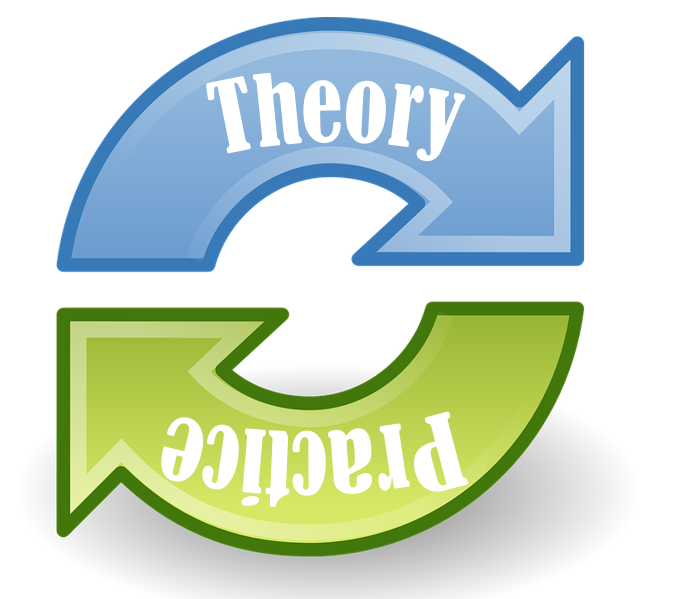
Theories are important for anyone who is trying to bring about social change. They help point us to what is really important to change, versus what might be more trivial and lead to ineffective action. But first, let’s look closely at what theories enable us to do. Most simply, theories allow us to describe, predict, and better understand something. Here is an example: Newton observed that an apple fell from a tree. In that famous story, he was able to first describe the apple falling. It is the first part of the scientific journey to describe something that you might see. The second step is to predict something based on what you just saw. For example, when Newton dropped a ball or other object, he predicted it would also fall, and that allowed him to be able to make predictions, which is the second part of a theory. Finally, a theory provides an “explanation” of what you just saw, in this case, the explanation being that gravity was causing the objects to fall to the earth.
Why are theories important?
That brief example reviews all the basic parts of a theory and can help us understand the role of theories in the field of Community Psychology. Theories have provided us with useful ways of thinking about the importance of the individual in relationship to the environment or community. The individual is influenced by the environment, which means that we must look beyond just individual factors when we try to analyze social problems or develop community interventions. Case Study 5.1 illustrates why theory matters, as it can provide us a lens to see the individual closely connected and influenced by the context.
Case Study 5.1
Ecological Theory
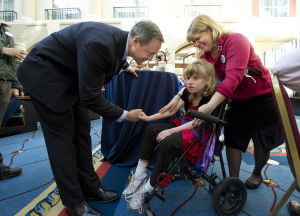
Partners in Policymaking™ is a national model of leadership training for people with developmental disabilities, and parents or family members of those with those disabilities. Partners in Policymaking™ is designed to provide knowledge about issues related to disability and to develop competencies of the participants to become effective advocates in influencing public policy in their local settings and at all levels of government. Partners in Policymaking™ uses ecological theory (see ahead in this chapter) in the design of the training for participants so they understand how ecological principles influence their advocacy. Partners in Policymaking™ uses an ecological model of disability advocacy that takes into consideration the perspectives of people at multiple levels of community, including 1) the experiences of the individual person with the disability, 2) others in the local area affected by the same challenges, 3) the local policies that need to change to make things better for the whole community, and 4) the policy changes that may also need to change at the national level. For example, a person with a disability who uses a wheelchair may be struggling to find adequate housing that has an elevator for their full inclusion in that building’s community. They will need to find out if this is a shared experience of other people in the community area and organize to create local policy change to enforce building requirements for people using wheelchairs. This could also become an opportunity for national policy change. Community psychologists are collaborating and supporting the work of community advocates through a state-funded agency that facilitates funds, and evaluate this training and community intervention.
As this case study illustrates, theories in Community Psychology help us think about developing interventions that involve not just the challenges experienced by certain people with disabilities, but also the environmental factors that maintain these challenges. In this case, we may learn that the community of people with disabilities extends to people who might use a wheelchair either temporarily or on a long-term basis. Toward this goal, the theories of Community Psychology assist in understanding how to bring about change by involving both the youth and their schools and other community settings. As indicated in Chapter 1 (Jason et al., 2019), theories in Community Psychology are based on core values and principles that involve a commitment to social justice for marginalized groups, creating more equitable distribution of resources across groups, an appreciation for a diverse array of worldviews, working in collaboration with communities, and adhering to a strengths-based approach to working with others. Community psychologists want to address the needs of people affected by natural disasters, people who have been historically marginalized (e.g., people living as ethnic minorities in the US and aboriginal people living in Australia), and people who identify with a community that is dealing with some type of societal discrimination (e.g., people with disabilities and people identifying with the LGBTQ community). Ultimately, Community Psychology theory helps to broaden our understanding of the social contexts in which we live so we can better work with others to identify important levers for change and assist in creating healthier spaces within our communities. As we will show in this chapter, theories help focus community psychologists on these areas for both their research and activism.
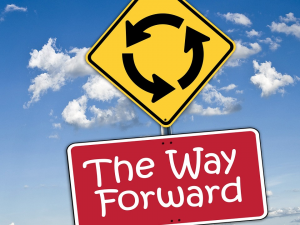
In a survey that recently asked community psychologists to nominate theories that have been used in their work, over 30 were mentioned (Jason et al., 2016). Behavior setting theory, for example, was developed by Barker (1968) to understand the relationship between individual behaviors and varying characteristics of the physical environment. A behavior setting is considered to be a place, a time, and a standing pattern of behavior. The main finding of this research was that settings generally have rules that cause any person within the same setting to act similarly; that people are interchangeable and you would still get the same behavior patterns. Understanding this information helps us to better understand the features of settings, including the social and cultural dynamics that maintain certain types of settings. This type of work can explain why some settings, such as prisons, often end up producing similar negative outcomes for individuals who are confined to these total institutions.
As several of the theories have been described in other chapters in this book (e.g., Empowerment and Behavioral models), they will not be reviewed below. This chapter will review some of the more prominent and influential theories that have laid the foundations of this field.
ECOLOGICAL THEORY

The ecological theory was developed by James Kelly (1966) who was one of the founders of the field of Community Psychology. The purpose of his theory, as shown in Table 1 below, is to provide a framework for understanding the structure and function of community. This theory assists in learning how the characteristics of the environment of the community can play a central role in the ways people interact and relate to each other. Through this framework, we can consider the dynamics among groups, organizations, and whole communities as they relate within certain settings, and help guide thinking around the development of community interventions (Kelly, 1968).
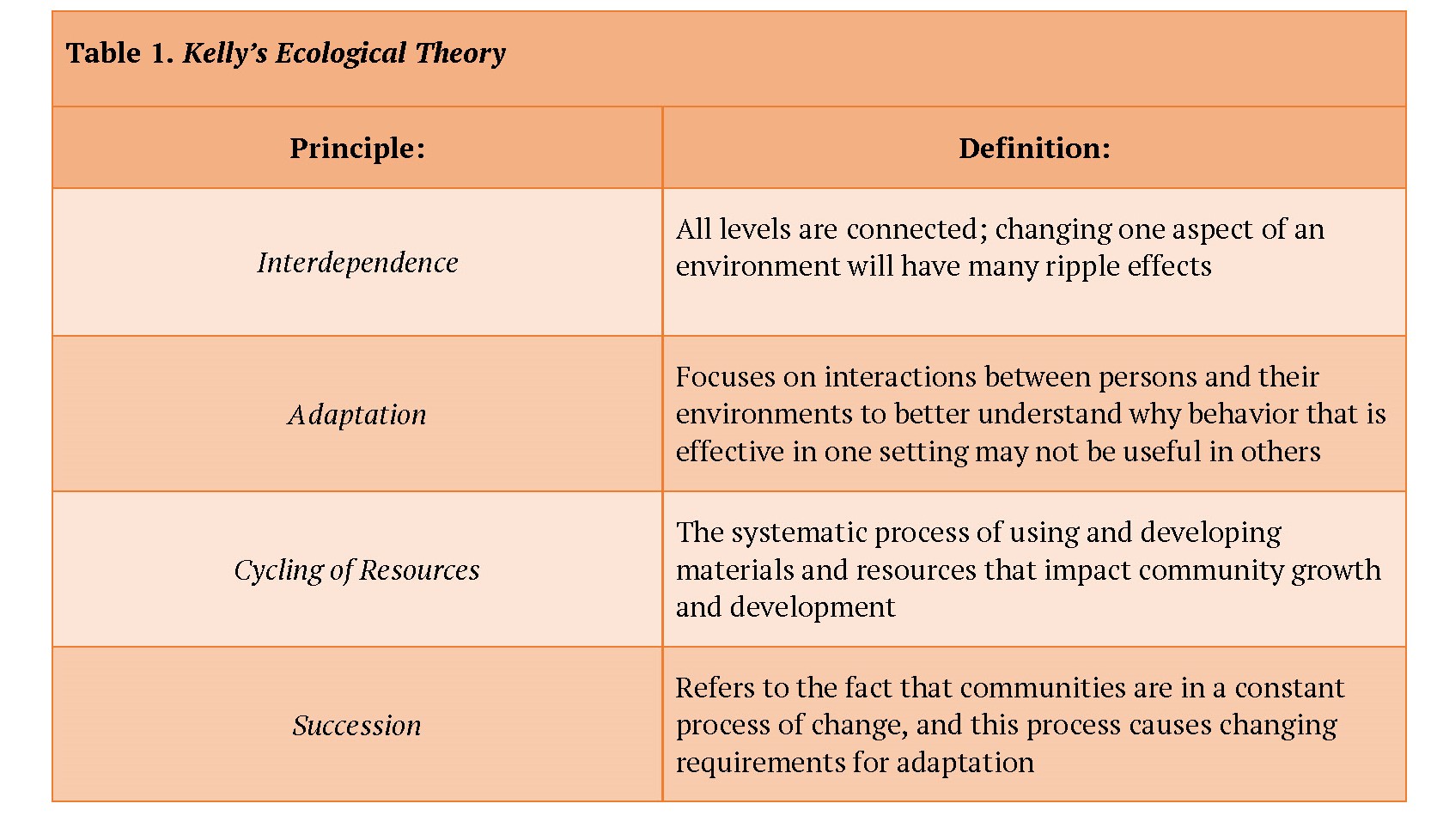
Kelly’s theory outlines four principles necessary for understanding inherent undercurrents within social systems that can be used to guide the assessment, development, and evaluation of preventive community interventions. The four principles are 1) interdependence, 2) adaptation, 3) cycling of resources, and 4) succession.
The principle of interdependence helps us understand that any change in one component of a system can affect changes in other components of the system as well, creating a domino effect. The concept of interdependence is central to the theory and practice of Community Psychology because it helps individuals to recognize that everything is interconnected. Case Study 5.2 provides an example of this principle.
Case Study 5.2
Mini-Grants Can Have Radiating Effects
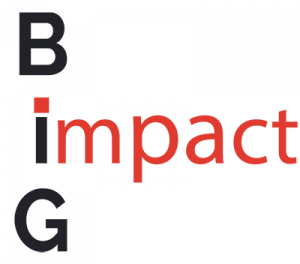
One intervention developed by community psychologists that captures how interdependence works is a local community mini-grant program. The program provided “mini-grants” to community residents that were designed to improve the physical structure and appearance of neighborhoods (i.e., refurbishing schools, fixing broken windows on local houses, bettering recreational and park systems). When community residents were provided with mini-grants, they not only improved their neighborhoods and school systems, but more importantly, they were provided with opportunities to build relationships with other neighbors through increased interactions and communication. Community psychologists would recommend that investigators assess and capture these interdependent dynamic processes that often occur with these types of easy-to-implement change strategies (Foster-Fishman et al., 2007).
Adaptation refers to the process of change and how what might be adaptive in one environment might not be in another. A child might be very extroverted and sociable, and have many friends due to these characteristics. But the child’s popularity among peers might not be valued by the teachers in the school, who might not appreciate it if this child talks to others and socializes frequently in the classrooms. So, what might be very adaptive in one type of setting might not be in another setting. Kelly (1979) found that schools enrolling many new students each year facilitated more youth exploratory behavior than schools that were stable in terms of enrollment. These types of findings help us understand this process of adaptation, to better understand the factors that account for why certain environments are more effective than others.
The third ecological principle is cycling of resources. Cycling of resources refers to the process of how communities identify, incorporate, and use different types of resources that exist within their communities. Resources can be skills and expertise, information, networks of social support, access to supplies or equipment, and socialization processes that either deter bias (i.e., gender or racial) or provide events (e.g., celebrations) for social and cultural cohesion. Using this principle, psychologists might either uncover existing competencies in a setting or match individuals with the settings that provide the resources they need, as indicated in Case Study 5.3.
Case Study 5.3
Resources Within Community Gardening
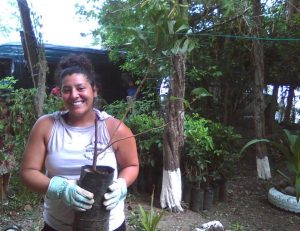
Community gardening, forestry, and fruit tree planting programs provide unique opportunities in demonstrating the importance of teaching community residents the psychological and physical benefits of green space sustainable activities (Hoffman, 2019). In a sense, these are resources available to everyone if we just notice them in our environment. Community gardening and horticultural programs can promote valuable educational skills as they provide opportunities for individuals to collaboratively engage in healthful restorative and sustainable practices with other community residents, and understand the multiple benefits of basic gardening knowledge and skills. The basic resources of soil, compost, and seeds are used to grow foods, and the garden area is used to teach younger children (and adults) the principles of horticulture and healthy food production. In community gardening, what may have once existed as a piece of unused land within a community would be converted to a community garden where healthy foods are produced and consumed by the community members, promoting a new local resource for healthy natural foods cultivated by local people at a minimal cost. Read more about the project here.
The final component of Kelly’s ecological theory is succession, which refers to the fact that communities are in a constant process of change, and this process causes changing requirements for adaptation. What is true about a person or setting today may not be true tomorrow. The process of change and development within the community over time is inevitable, and communities have an obligation and need to help residents meet the demands of changing environments. For example, as populations within the community tend to age, newer and younger families can work with older residents by sharing information and creating a more holistic environment for all community members. Additionally, as new family groups from different ethnic backgrounds become prevalent within the community, traditional institutions (i.e., school systems and community businesses) will need to evolve and adapt to meet the demands of a changing population. An example of a problem with succession in practice is illustrated in Case Study 5.4.
Case Study 5.4
The Evolution of Coalitions Over Time
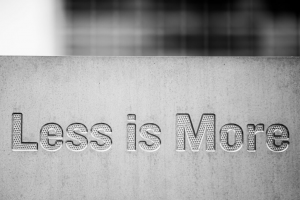
Campbell et al. (2012) found that communities can become “over-coalitioned” or have too many coalitions, leading to poorer outcomes. These community psychologists studied a community coalition that was working to facilitate better case outcomes for sexual assault cases in the criminal justice system involving adolescent victims. They found that over time, the addition of a related coalition in the same community—focusing on sexual assault cases involving young children—led to poorer outcomes for the first coalition. They theorized that the new coalition spread thin the existing human capital and system capital, or resources, needed to ensure good outcomes.
SENSE OF COMMUNITY THEORY

The theory of sense of community was first described by the community psychologist Sarason (1974). This theory was meant to capture the feeling people experience when they perceive themselves as having an interdependent connection with a broader community outside themselves. More specifically, the psychological sense of community is: “the feeling one is part of a larger dependable and stable structure” (p. 157). McMillan and Chavis (1986) defined a sense of community as a feeling that members have of belonging; members feel that they matter to one another and the group. There is a shared faith that members’ needs will be met through their commitment to being together. Community psychologists measure a sense of community by assessing: 1) membership, 2) influence, 3) integration and fulfillment of needs, and 4) shared emotional connection. Membership involves clear boundaries regarding who is in and who is out of the specific community. Influence refers to the ability one feels one has to impact the broader community-level and individual-level norms that guide the practices of the community. Integration and fulfillment of needs refer to feeling connected to a network that holds shared values, that exchanges resources, and meets needs. Shared emotional connection refers to participation in the celebrations of others, and participation in specified rituals or ceremonies.
If a sense of community is a core value, then it is important to try to find ways to reliably assess and measure it so that we can assess how an intervention might affect the sense of community. If for example, an intervention is effective in a particular outcome, such as increasing academic grades in youth, but has the negative consequence of reducing the sense of community for the students in the classroom, then community psychologists would judge this as an ineffective and potentially harmful intervention. There have been attempts at better conceptualizing and measuring a sense of community in order to understand how people experience their connection with their community. The following case study used a brief and reliable scale developed by Jason et al. (2015) to measure the psychological sense of community among those involved in the Columbian peace process.
Case Study 5.5
Columbian Peace Process and Sense of Community
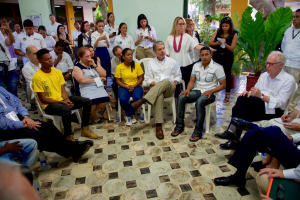
As part of the Colombian Peace Process victim assistance programs, Maya-Jariego et al. (2019) used the nine‐item Psychological Sense of Community scale which evaluates the value attributed to the community (e.g., “I am not planning on leaving this neighborhood”), the relationships among the members of the collective (e.g., “neighbors can get help from other neighbors if they need it”), and the emotional connection of the individual with the collective (e.g., “I feel good helping the neighborhood and its neighbors”). The study was part of the effort to reincorporate into civilian life the ex‐combatants and demobilized persons of the armed conflict. They interviewed 143 community leaders, and they found a significant relationship between the density of personal networks and the psychological sense of community. They concluded that socio-geographic segregation derived from housing policies can be an obstacle to the effective functioning of the coexistence and reintegration programs of victims and demobilized persons of the armed conflict.
SOCIAL CLIMATE THEORY

Rudolf Moos (2003), another influential community psychologist, developed the social climate theory in an effort to better understand the natural interplay between individuals and their social contexts. Social climate theory helps to understand how people adapt to their social environment and how contexts adapt to people. Social climate taps three main dimensions of how people perceive: 1) how a setting organizes their perceptions of social relationships, 2) how they are being supported in their personal development, and 3) how the setting handles the maintenance of norms and supports change processes. From a psychological measurement perspective, the social climate is very much related to indicators of individual well-being. This measure has been useful for assessing setting dynamics within schools and juvenile treatment programs.

An example of a situation where you might use this theory is when seeking to understand the experience of people in a particular setting, such as an organization where people are said to be experiencing discrimination. You would use a social climate survey to assess to what extent the people within this organization are experiencing similar challenges in all corners of the organization. Depending on which departments/offices are experiencing the highest levels of discrimination, this may have implications for ways a community psychologist could intervene to change how the setting is experienced moving forward.
Scores to measure social climate are very much related to indicators of individual well-being. This measure has been useful for assessing setting dynamics within schools and juvenile treatment programs (Moos, 2003). Theories and measures need to be rigorously tested so that they can be improved, as witnessed by Leipoldt, Kayed, Harder, Grietens, and Rimehaug (2017). They found that the original subscales developed by Moos needed to have weak items removed, and once this occurred, the revised version showed acceptable measurement qualities.
LIBERATION PSYCHOLOGY

Liberation Psychology (or psicología de la liberación) is based on a more critical perspective that acknowledges the role of power and the ongoing battle for resources. As part of the critique of traditional psychology, Liberation Psychology was developed in Latin America during the 1970s as a theoretical framework to better understand oppressed and impoverished communities (Montero & Sonn, 2009).
Many people around the world live in an oppressive society where one group has power over another (see Chapter 4; Palmer et al., 2019), and this contributes to unequal distribution of resources. Liberation psychology emphasizes helping people to gain more control over the resources that affect their lives. Aspects of Liberation Psychology are embedded within empowerment theory (see Chapter 10; Balcazar et al., 2019).
Core components of Liberation Psychology include praxis and dialectics. Praxis can be thought of as a tool for acquiring knowledge and transforming oppressive realities involving a conscious integration of theory and practice to make theory more grounded in reality (Montero & Sonn, 2009). Dialectics is a philosophy of praxis emphasizing that knowledge is not created unless acquired through a method of mediated social discourse. In other words, we develop knowledge about the world and simultaneously work to bring about change. Dialogue needs to occur between power holders and the oppressed to raise the consciousness of all to understand the meaning of oppressive actions (see Chapter 17; Olson et al., 2019). This raised awareness of conditions challenges the status quo and may create a desire for those in power to be more humane. Ultimately, the hope is for the encouragement of a rethinking of problems “with and from, the oppressed; with a commitment to unveil and characterize conditions of oppression and exploitation suffered by large sectors of the population” (Montero & Sonn, 2009; p. 31).
SUMMING UP

Theories are used in Community Psychology to ensure we are addressing the community dynamics in all the ways needed to be most effective in promoting a social justice agenda. Community Psychology represents an innovative perspective focused on understanding how environments shape and are shaped by people’s lives. This requires theoretical frameworks that help us better understand community settings and physical contexts rather than more traditional approaches that only try to change the individuals experiencing a problem, such as through individual therapy or medication. In fact, individuals from around the world are drawn to the ideas of Community Psychology because it has suggested ways to respond to the social issues and needs of marginalized populations struggling with colonization, racism, and oppression in North America, Latin America, South Africa, Australia, and New Zealand (Reich, et al., 2017).
Community Psychology is embedded in a deep understanding of community context. Our theories help us to more clearly critically analyze the social context and historical context within which we need to consider the allocation and distribution of resources, as well as the assumptions that have shaped the world we live in.
Critical Thought Questions
- How does the role of the community psychologist differ from that of professionals in other disciplines addressing human behaviors and social interaction?
- Identify and briefly describe James Kelly’s (1966) four ecological principles. Be sure to provide examples of each and how these principles may be applied to current issues facing communities today.
- Based on Roger Barker’s (1968) behavior setting theory, identify three different types of settings (i.e., sports and restaurants) and include how different types of prescribed behaviors (i.e., scripts) unfold over time within each of these settings.
- Why is sense of community especially important for communities that want to address problems involving conflict, oppression, and discrimination among marginalized groups?
Take the Chapter 5 Quiz
View the Chapter 5 Lecture Slides
____________________________________________________________________
REFERENCES
Balcazar, F. E., Keys, C. B., & Vryhof, J. A. (2019). Empowerment. In L. A. Jason, O. Glantsman, J. F. O’Brien, & K. N. Ramian (Eds.), Introduction to Community Psychology: Becoming an agent of change. https://press.rebus.community/introductiontocommunitypsychology/chapter/empowerment/
Barker, R. G. (1968). Ecological psychology: Concepts and methods for studying the environment of human behavior. Stanford University Press.
Campbell, R., Greeson, M., Bybee, D., & Fehler-Cabral, G. (2012). Adolescent sexual assault victims and the legal system: Building community relationships to improve prosecution rates. American Journal of Community Psychology, 50(1-2), 141-154. https://doi.org/10.1007/s10464-011-9485-3
Foster-Fishman, P. G., Nowell, B., & Wang, H. (2007). Putting the system back into system change: A framework for understanding and changing organizational and community systems. American Journal of Community Psychology, 39, 197-215.
Hoffman, A. J. (2019). Creating a culture of transformation in Guatemala: One fruit tree at a time. Electronic Green Journal, 1(40). https://escholarship.org/uc/item/3p03s4gk
Jason, L. A., Glantsman, O., O’Brien, J. F., & Ramian, K. N. (2019). Introduction to the field of Community Psychology. In L. A. Jason, O. Glantsman, J. F. O’Brien, & K. N. Ramian (Eds.), Introduction to Community Psychology: Becoming an agent of change. https://press.rebus.community/introductiontocommunitypsychology/chapter/intro-to-community-psychology/
Jason, L. A., Stevens, E., & Ram, D. (2015). Development of a three-factor psychological sense of community scale. Journal of Community Psychology, 43, 973-985.
Jason, L. A., Stevens, E., Ram, D., Miller, S. A., Beasley, C. R., & Gleason, K. (2016). Theories in the field of community psychology. Global Journal of Community Psychology, 7(2), 1-27.
Kelly, J. G. (1979). Adolescent boys in high school: A psychological study of coping and adaptation. L. Erlbaum Associates.
Kelly, J. G. (1966). Ecological constraints on mental health services. American Psychologist, 21, 535-539.
Kelly, J. G. (1968). Toward an ecological conception of preventive interventions. In J. Carter (Ed.), Research contributions from psychology to community mental health (pp. 75-99). Behavioral Publications.
Leipoldt, J. D., Kayed, N. S., Harder, A. T., Grietens, H., & Rimehaug, T. (2017). Refining the COPES to measure social climate in therapeutic residential youth care. Child & Youth Care Forum, 47(2), 173–197. https://doi.org/10.1007/s10566-017-9424-z
, De La Peña-Leiva, , & . (2019). Personal networks, social media, and community cohesion in the strategies of peace‐building agents in Colombia to counteract the segregation of displaced populations. Journal of Community Psychology, 1– 13. https://doi.org/10.1002/jcop.22173
McMillan, D. W., & Chavez, D. M. (1986). Sense of community: A definition and theory. Journal of Community Psychology, 14, 6-23.
Moos, R. H. (2003). Social contexts: Transcending their power and their fragility. American Journal of Community Psychology, 31, 1-13.
Montero, M., & Sonn, C. (2009). Psychology of liberation: Theory and applications. Springer.
Olson, B. D., O’Brien, J. F., & Mingo, E. (2019). Social and political change. In L. A. Jason, O. Glantsman, J. F. O’Brien, & K. N. Ramian (Eds.), Introduction to Community Psychology: Becoming an agent of change. https://press.rebus.community/introductiontocommunitypsychology/chapter/social-and-political-change/
Palmer, G. L., Ferńandez, J. S., Lee, G., Masud, H., Hilson, S., Tang, C., . . . Bernai, I. (2019). Oppression and power. In L. A. Jason, O. Glantsman, J. F. O’Brien, & K. N. Ramian (Eds.), Introduction to Community Psychology: Becoming an agent of change. https://press.rebus.community/introductiontocommunitypsychology/chapter/oppression-and-power/
Reich, S. M., Bishop, B., Carolissen, R, Dzidic, P., Portillo, N., Sasao, T., & Stark, W. (2017). Catalysts and connections: The (Brief) history of Community Psychology throughout the world. In M. A. Bond, I. Serrano-Garcia, & C. B. Keys (Eds.), APA handbook of Community Psychology: Theoretical foundations, core concepts, and emerging challenges (Vol. 1, pp. 22-66). American Psychological Association.
Sarason, S. B. (1974). The Psychological Sense of Community: Prospects for a community psychology. Jossey-Bass.

A field that goes beyond an individual focus and integrates social, cultural, economic, political, environmental, and international influences to promote positive change, health, and empowerment at individual and systemic levels (SCRA27.org).
Natural or developed ecological environments where behaviors evolve over time. A process by which different types of settings can be expected to influence the behaviors of people within a variety of different types of situations.
Because everything is connected, changing one aspect of an environment will have many ripple effects.
Focuses on interactions between persons and their environments to better understand why behavior that is effective in one setting may not be useful in others.
The systematic process of using and developing materials and resources that impact community growth and development.
Refers to the fact that communities are in a constant process of change, and this process causes changing requirements for adaptation.
An individual's perception of similarity to others, giving to others what one expects from them, and the feeling that one is part of a larger dependable and stable group.
Understand how people adapt to their social contexts, how they survive traumatizing contexts, and how contexts adapt to persons within that context; addressing the power and fragility of social settings.
Originally described by Julian Rappaport (1981), empowerment refers to the capacity for individual growth, self-determination and autonomy through the prescribed use and access of community resources.
A repetitive process of turning a theory, lesson, or skill into an actualized action.

